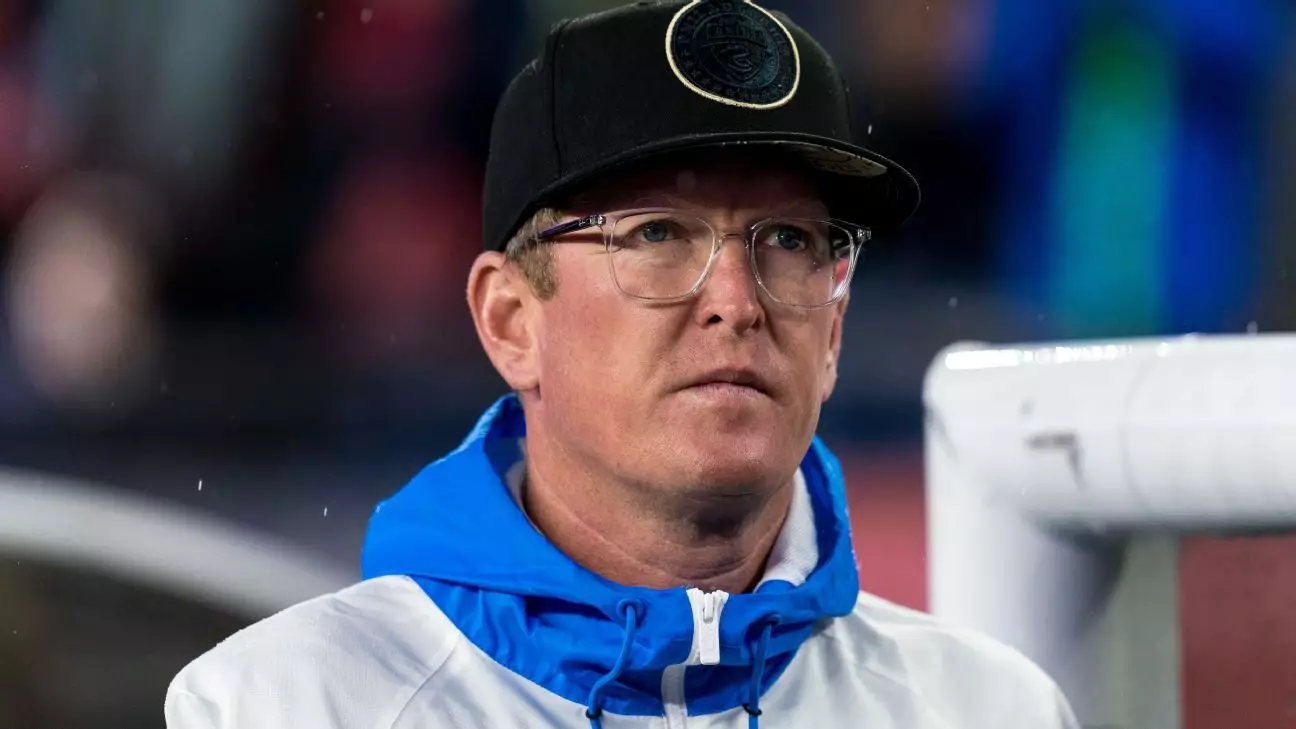The recent news of Jim Curtin’s dismissal as manager of the Philadelphia Union has reverberated throughout the soccer community, leaving many to grapple with the implications of this dramatic turn of events. Curtin, a two-time MLS Coach of the Year and a figure deeply ingrained in the club’s identity, departed after an uncharacteristic season that saw the Union miss the playoffs for the first time since 2017. This article delves into the surprising facets of this decision, offering insights into the organizational dynamics at play, the future of the club, and the intricate balance of success and accountability within professional sports.
The decision to part ways with Curtin has been characterized by many as sudden and unexpected, both from fans and within the organization itself. Insiders report a sense of being “blindsided,” highlighting the profound connection Curtin held with the club and the community. This attachment was not only a product of his achievements but also stemmed from his roots in Oreland, Pennsylvania, and his extensive history with the franchise, which spanned over 14 years. His tenure included significant accomplishments, placing the Union firmly on the MLS map.
Despite the club’s claimed narrative of a mutual parting, sources point to a harsher reality—Curtin was effectively fired. This abrupt change raises questions about the pressures faced by managers in high-stakes environments where every season can lead to decisive consequences.
If one were to dissect the reasons behind Curtin’s termination, the primary culprit appears to be the team’s disappointing performance this past season. Although the Union had enjoyed substantial success, recent struggles indicated a drop in performance standards. The club’s reliance on a sales-driven model, coupled with lower-than-average expenditures, placed extensive pressure on every team member involved in player development and acquisition.
Curtin’s strategic coaching combined with the Union’s commitment to promoting homegrown talent had previously turned the team into a formidable contender. However, as the reliance on young academy players grew, the organizational margin for error narrowed significantly. This year’s failure to capitalize on their academy system and make timely acquisitions in the transfer market ultimately culminated in Curtin’s departure—it was a move that appears more punitive than strategic.
While addressing player performance, one must consider that the development pipeline has often been uncertain. There had been notable successes with homegrown talents such as the Aaronson brothers and Mark McKenzie, fostering a reputation for the Union as a breeding ground for emerging stars. Yet, as other key players exited the team, including José Martínez and Julián Carranza, the continuity of success became fragile.
Further complicating this narrative is the evolving structure within the Union’s front office. The departure of several crucial staff members left Curtin in a precarious position. Former assistants and a technical director, who had previously been essential buffers, were no longer part of the equation. This has contributed to a potential erosion of organizational culture and trust. It was reported that tensions existed between Curtin and sporting director Ernst Tanner, raising suspicions that dissatisfaction brewed long before the shocking announcement was made.
The fate of Jim Curtin also reflects a broader trend within professional sports—how easily organizations may scapegoat coaches in times of struggle. A single season can often outweigh years of achievement, particularly if the pressure for results intensifies.
Despite the setback, one must consider Curtin’s legacy. His coaching prowess, adeptness at maximizing limited resources, and his intrinsic connection to the Philadelphia community have left an indelible mark. As he departs, there is an undeniable sense of loss, as the Union must now confront the challenges of maintaining their competitive edge amid changes.
In contrast, the Union’s management must contend with their approach moving forward. The onus is on Tanner, who remains as sporting director, to effectively balance player recruitment and development while navigating the expectations that come with Curtin’s departure. Moreover, the allure of Curtin’s unique leadership fabric will be challenging to replicate in future hires, as the club enters an uncertain future.
As the dust settles, the Philadelphia Union face a significant crossroads. The decision to let go of Jim Curtin symbolizes more than just a managerial change; it represents the fragility of success in the competitive landscape of Major League Soccer. Much will depend on the front office’s ability to rebuild cohesion and establish a clear vision, which may be difficult without the fabric that Curtin once provided.
For now, the Union must brace for the challenge ahead, striving to reclaim their former glory while learning from the very mistakes that led to their unexpected parting with one of their most dedicated leaders. The intricate dance between loyalty, performance, and expectations will continue to unfold, shaping both the future of the franchise and the legacy of a coach who gave everything for his club.

Leave a Reply